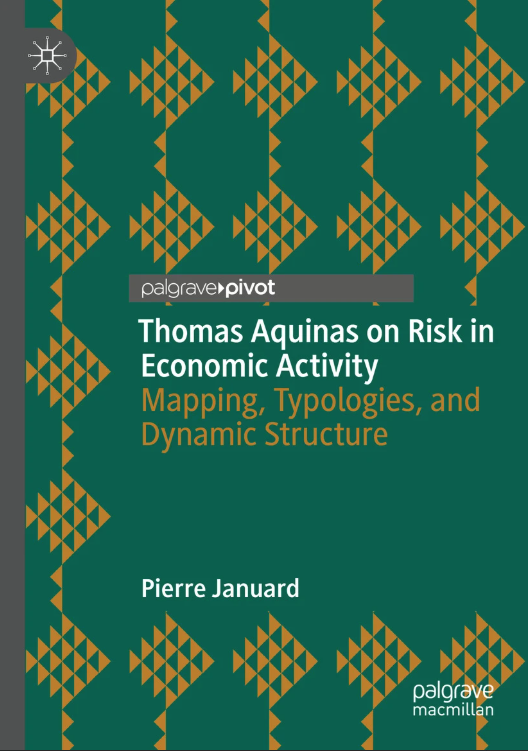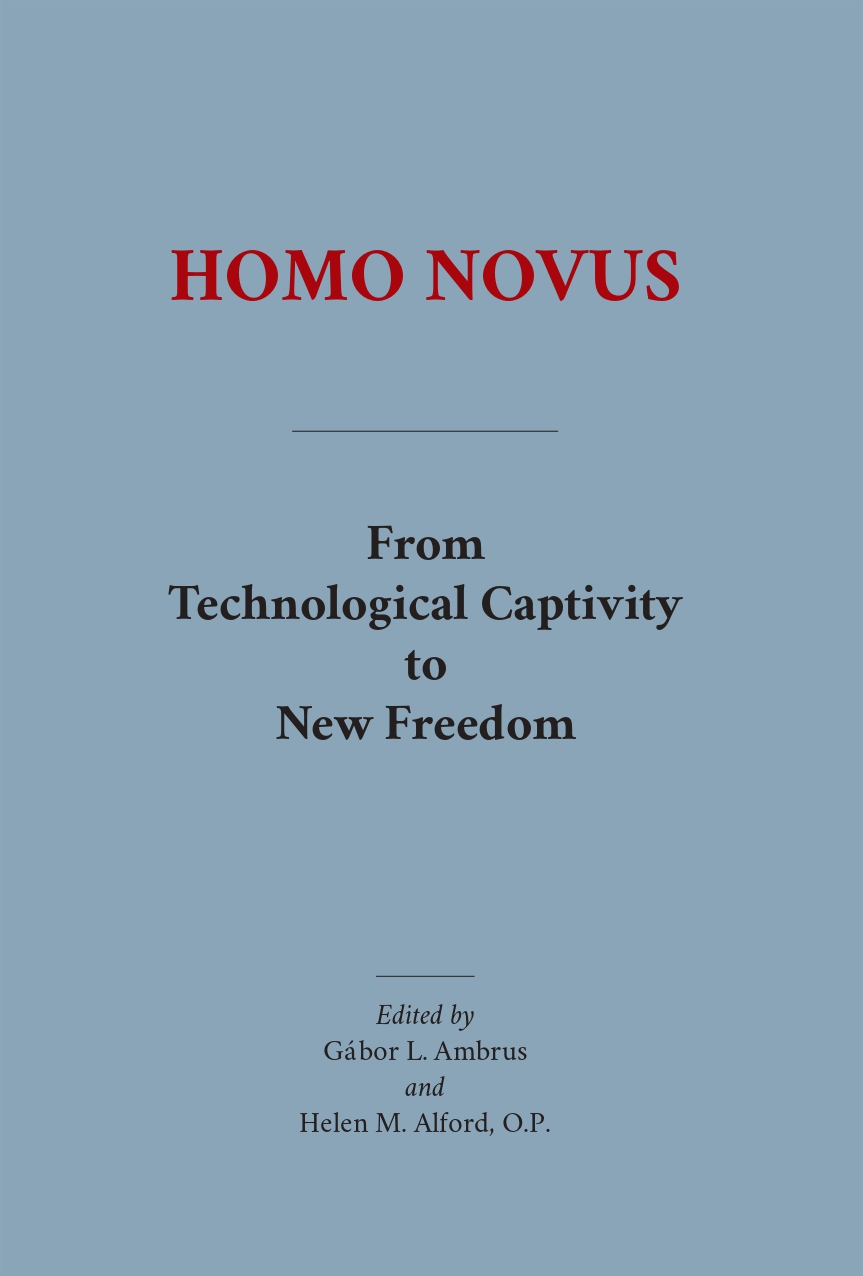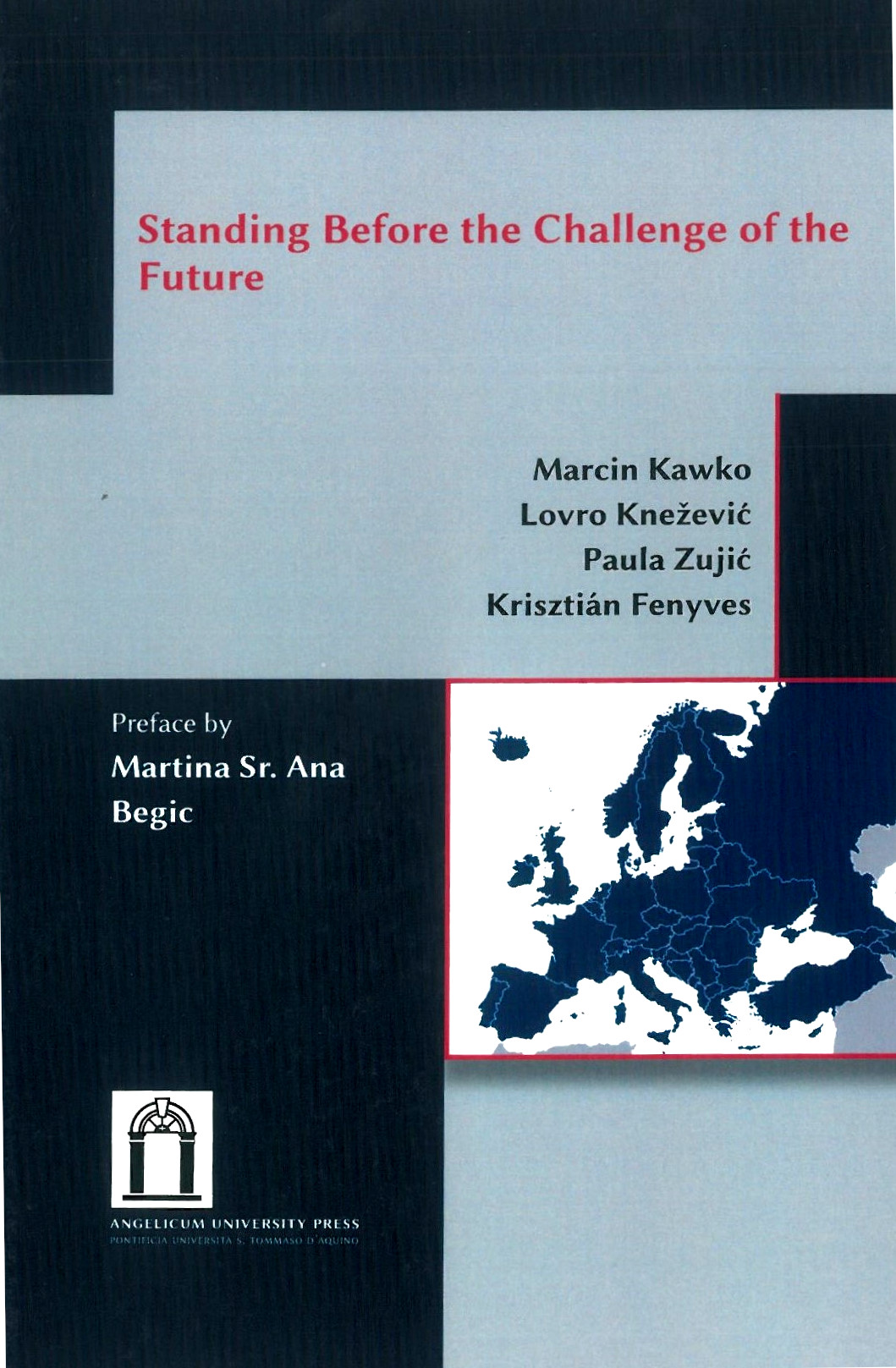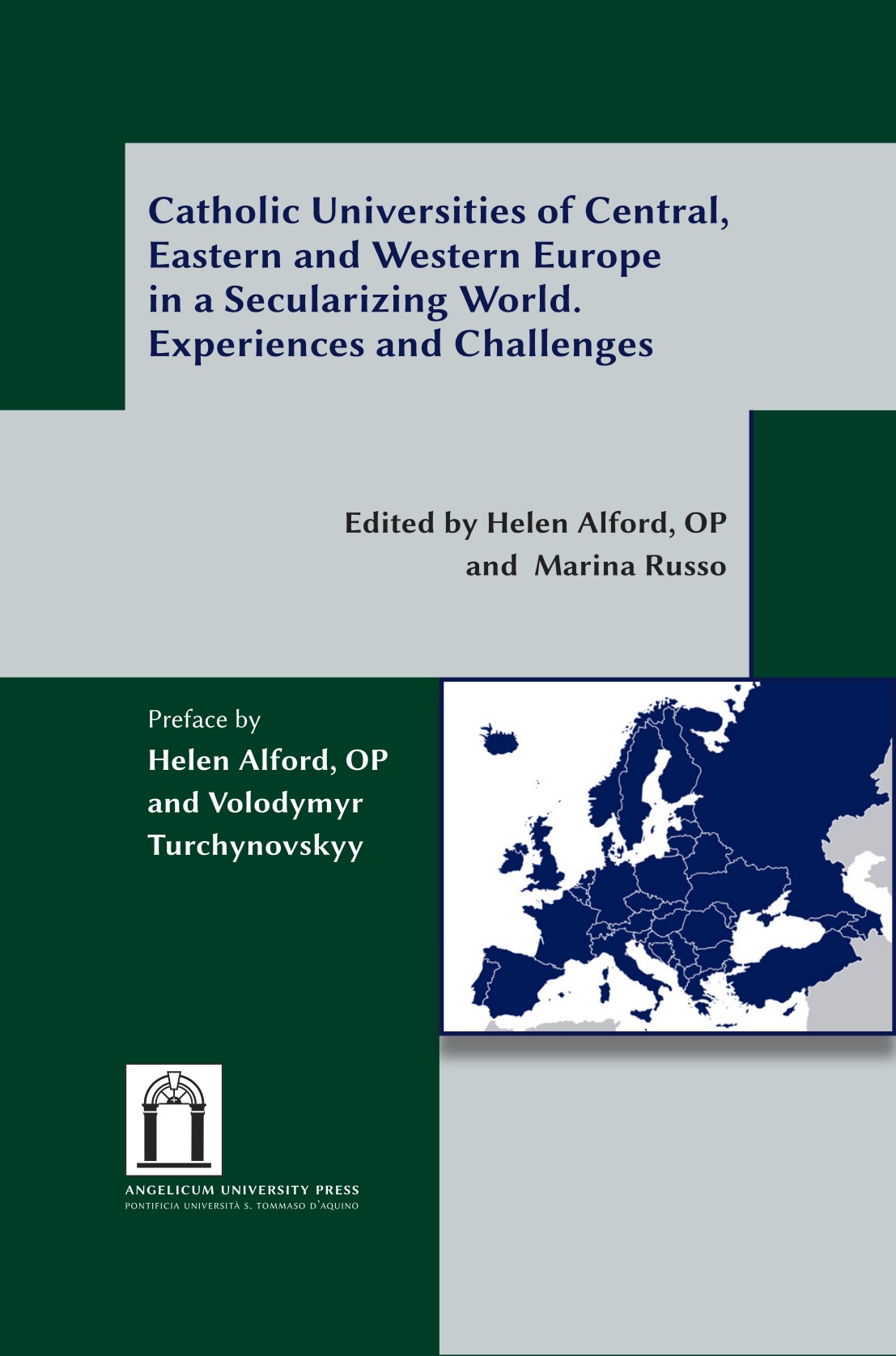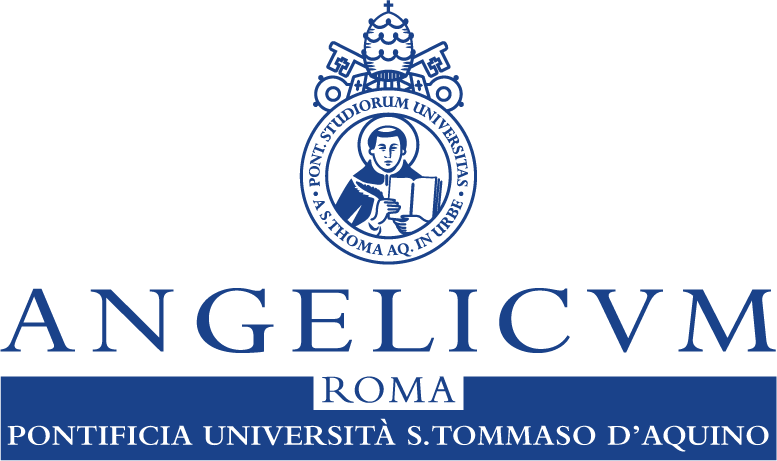Lost in transitions: the contribution of Catholic Social Thought to the United Nation SDG Framework
Stefano Menghinello
Introduction
Fr. A. Barrera's short paper, Balancing Clashing Sustainable Development Goals with Catholic Social Thought’s Order of Charity, makes a substantial contribution to the current debate on the role of the SDGs of the United Nations as a conceptual and empirical framework to guarantee environmentally sustainable and socially inclusive economic development in both developed and developing countries. His contribution is both timely and enlightening at a time when the SDGs appear to have lost or at least diminished their positive momentum, in the face of growing uncertainties on the international level and increasing budgetary constraints at the public and private sector levels.
Nowadays private and public investments are decreasing worldwide and every decision on public spending or private investment must be carefully evaluated. In this context, the SDG framework is challenged with respect to its ability to provide concrete responses in the presence of budgetary constraints and alternative and potentially conflicting investment solutions.
Catholic Social Thought (CST) can provide a substantial contribution to bridging the gap between the SDG framework and its concrete and effective implementation. In particular, the scope of Fr. Barrera's work is twofold. From a conceptual point of view, it contributes to defining more effectively and coherently with CST the priorities for public or private intervention based on the Sustainable Development Goals. From an empirical point of view, it promotes and directs the development of more adequate metrics in providing concrete guidance to policy makers and economic operators, both of whom are quite disoriented in the current context.
This short paper is organized as follows. The first paragraph introduces the SDG framework and its implications for governments, corporations and non-profit institutions. The second paragraph illustrates what theoretical and empirical problems may arise for public institutions and private companies from the adoption of decision-making processes that consider multiple and potentially conflicting alternatives. The third paragraph highlights how, starting from Fr. Albino's approach, it is possible to eliminate or at least mitigate the problems highlighted in the previous paragraphs, converging on clearer, more sustainable and ethically coherent decisions with CST.
The United Nations SDGs as a Framework to support Sustainable and Inclusive Development
The SDG framework developed by the United Nations represents the very successful outcome of a rather long process of rethinking and refining economic development goals and policies. This process of selecting and monitoring more accurately a limited number of internally shared and agreed goals started in the middle of the 1990s with the UN report "Shaping the 21st Century", which turned some of the Copenhagen commitments into six monitorable International Development Goals. The Millennium Development Goals (MDGs), a UN initiative, had reinforced this process with a time span from 2000 to 2015. The MDGs were eight international development goals to be achieved by the year 2015, following the adoption of the United Nations Millennium Declaration[1]. Each goal had specific targets, and dates for achieving those targets. Overall, the eight goals were measured by 21 targets.
Although this approach introduced some substantial innovations in terms of identifying and measuring objectives, critics of the MDGs complained, among other things, of a lack of analysis and justification behind the chosen objectives and the difficulty or lack of measurements for some goals. Furthermore, the MDG approach did not seem to have produced the expected results, since economic development continued to be highly differentiated across countries.
The Sustainable Development Goals (SDGs) succeeded the MDGs in 2016, introducing some substantial innovations that aimed to review the mistakes of the past and improve the prospects for the future. In particular, the new approach could benefit from the numerous improvements achieved in the meantime by other meetings and acts of the United Nations. In particular, the resolution adopted in New York by the General Assembly on 27 July 2012 “The Future We Want”(United Nations, 2012), after the United Nations Conference on Sustainable Development held in Rio de Janeiro on June 2012, strongly emphasized the primacy and urgency of reducing poverty and hunger, the importance of integrating environmental objectives, along with economic and social ones, in promoting balanced economic development, and the central role of civil society as an engine of the process of economic transformation and regeneration. In addition, the resolution endorsed by the General Assembly of the United Nations on 27 July 2015 called the “Addis Ababa Action Agenda” (United Nations, 2015a), after its preliminary adoption at the Third International Conference on Financing for Development (Addis Ababa, Ethiopia, 13-16 July 2015), reaffirmed a strong political commitment to addressing the challenges of financing and creating an enabling environment at all levels for sustainable development in the spirit of global partnership and solidarity.
The Sustainable Development Goals (SDGs) were introduced by the United Nations resolution adopted by the General Assembly on 25 September 2015 “Transforming our world: the 2030 Agenda for Sustainable Development” (United Nations, 2015b).
As stated in its preamble “The 17 Sustainable Development Goals and 169 targets which we are announcing today demonstrate the scale and ambition of this new universal Agenda… They are integrated and indivisible and balance the three dimensions of sustainable development: the economic, social and environmental”. In particular, the Agenda was built upon the following pillars:
- eradicating poverty in all its forms and dimensions, including extreme poverty, is confirmed as the greatest global challenge and an indispensable requirement for sustainable development
- expanding the scale and scope of the Agenda to include 17 SDGs.
- SDGs are assumed to be integrated and indivisible and to balance the three dimensions of sustainable development: the economic, social and environmental
- collaborative partnership across all countries and all stakeholders is considered the key factor in successfully implementing the Agenda. In particular, one specific goal is devoted to supporting the implementation of the SDGs, taking into account the different levels of national development and capacities
- the process of development envisaged by the Agenda is bottom up, stimulating and leveraging the energies and transformative capacity within national and local business communities and civil society.
With the resolution adopted by the General Assembly of the United States on 6 July 2017, the Global indicator framework for SDGs goals and targets of the 2030 Agenda was adopted (United Nations, 2017). As stated in the resolution, SDGs indicators should be disaggregated, where relevant, by income, sex, age, race, ethnicity, migratory status, disability and geographic location, or other characteristics, in accordance with the Fundamental Principles of Official Statistics.
Both the SDG conceptual framework (United Nations, 2015b) and the Global indicator framework for SDGs (United Nations, 2017) contribute to defining the UN Framework on SDGs in terms of priority setting and monitoring of outcomes as a distance from expected goals and targets.
Considerations that can be made so far regarding the validity and relevance of the SDG framework are related to both the state of the art of the results achieved so far - in fact we are halfway through the implementation period with respect to the final targets and objectives - and the nature of the framework in terms of overall theoretical consistency and the feasibility for its correct implementation. Concerning this latter issue, the interconnections between the goals and how these can be considered in the definition of a decision-making process at the level of governments, businesses or local communities plays a crucial role in the consistent and effective implementation of the SDG Agenda.
As regards the first aspect, the latest United Nations interim report shows the presence of mixed effects. While on the one hand the successful achievement of selected objectives in some countries appears evident, on the other hand other objectives appear to be at a standstill, while some other goals are going backwards. These results, on the one hand, highlight the extremely ambitious nature of the objectives to be achieved, and, on the other, the potential critical issues in the actual implementation of such a complex and articulated framework.
Coming now to a consideration of the SDG Framework from the point of view of its theoretical coherence and implementation feasibility, a large number of issues can be considered. First of all, as also recognized by economists and social scientists, the SDGs do not reflect a coherent and cohesive theoretical framework; the United Nations itself prefers to talk about a “holistic approach”. The high number of interconnections and interdependencies among the various dimensions considered - business, social and environmental - has suggested to many social scientists that they need to adopt theoretical frameworks borrowed from other scientific fields such as the concept of entropy used in physics. Consequently, it is very complicated to define the relationships a priori, especially those of a causal nature, between the various objectives and targets considered by the SDG framework.
Regarding the implementation of the SDG approach, applied studies, as well as the field experience of experts, have emphasized significant difficulties both in identifying and prioritizing objectives in a manner consistent with the specific needs of the local context and the difficulty for local stakeholders to participate in the decision-making process and in monitoring the results.
A particularly relevant aspect both from a theoretical and practical implementation point of view concerns the strong emphasis placed by the SDG framework on the presence of interlinkages and on the integrated nature of the SDGs. These issues are highly underscored but not clearly explained. In particular, the evaluation of the effects produced by these interdependencies is assumed to be positive, since the term synergy is often referred to in this context. On the other hand, elements of potential conflict or contrast appear to be clearly underestimated or not clearly identified. Consequently, given the positive effect produced by these interdependencies, the focus on a specific goal is assumed to strengthen the other ones and, therefore, the problem of priority setting among the goals is not considered relevant.
Unfortunately, reality seems to be working in a different direction. It is well known from the media and the growing evidence produced by the scientific literature that significant conflicts may arise between the economic, environmental and social dimensions. The case of the ecological transition for the automotive industry in advanced countries represents a remarkable example. While investments in new green technologies can lead to strengthening the productivity and competitiveness of companies in the medium term, a fast transition nevertheless damages in the short term the same companies due to the growing competitiveness of emerging countries. Civil society seems to pay the highest price of an accelerated green transition, considering the fact that the poorest families cannot afford to pay for electric cars that are sold at an average higher price than those that use fossil fuels. The presence of potential conflicts is even more relevant in the case of developing countries. In these cases, in fact, much more radical choices must be made between extreme poverty reduction and investment to reduce pollution and social inequality, given more severe budget constraints.
It is therefore necessary to better investigate the nature of the interdependencies and interconnections between the SDGs in order to define more accurately the expected net benefits and to proceed to a rigorous prioritization of these goals.
Let’s assume that Goal A is aimed at poverty reduction and Goal B concerns the improvement of local environmental conditions. Considering that, in the absence of a well-defined theoretical framework and given the presence of indirect effects with other variables (spurious correlation) one cannot speak of causality but only of (simple or total) correlation, the relationship between these two goals can be classified as follows:
ρ (Goal_A, Goal_B) > 0: in this case, A and B are directly or positively correlated, so that, for instance better local environment conditions also help to improve living conditions for the poor. These goals mutually reinforce each other, which is the synergy effect highlighted by United Nations documents.
ρ (Goal_A, Goal_B) = 0: in this case A and B are uncorrelated so that their individual effects can be independent from one another. An example might be that improvements in local environment conditions do not impact on poverty relief.
ρ (Goal_A, Goal_B) < 0: in this case A and B are inversely or negative correlated and therefore they produce conflicting effects, since, for instance, an improvement in local environmental conditions increases the poverty gap between the rich and the poor in the same area for instance by raising the prices of local houses, besides the crowding out effect on public expenditure.
Where there are more than two goals, their interdependencies can be considered in a correlation matrix. More interestingly, the direction of the relationship between two goals also crucially depends on time (t) and space (s) dimensions:
ρ ( , )
For instance, the following three relationships between Goal A and B can be all true:
ρ ( , ) < 0
ρ ( , ) > 0
ρ ( , ) = 0
In the first case Goal A and Goal B are negatively correlated with respect to the same location and time. In this case, as highlighted before, better environmental conditions produce conflicting effects on poverty reduction. In the second case, better environmental conditions today (t=1) produce potential benefits for poverty alleviation in the future (t=2) since, for instance, they reinforce the economic self-sufficiency of local farmers based on ecological agriculture. In the third case, a different local context (s=2) makes the relationship between goal A and B more neutral. This can be found, for instance, in a developed country, where the importance of agriculture for economic development is residual.
These considerations lead us to recognise the presence of more complex and potential conflicting interactions in the interdependencies across the SDGs that need to be carefully assessed in priority setting among these goals, also considering the intertemporal and spatial dimensions as key components of this evaluation process.
Broadly speaking, the SDG framework designs and aims to implement a multilevel framework where multiple dimensions - economic, social and environmental - strongly interact. It is also characterized by a large number of stakeholders, aiming at mobilizing local resources in a generative and creative way according to a participatory and collaborative mechanism. More specifically, the SDG framework aims to be responsive to local needs and adaptive to different contexts by proposing a wide range of goals and indicators to be selected and carefully monitored. As a result, a coherent and efficient implementation of the SDG framework requires a high level of competencies and the adoption of an appropriate methodological approach.
Investment choices in an uncertain context and with multiple goals
An investment choice is characterized rather simplistically in mainstream economics as the pursuit of a single objective, represented by profit, which requires the resolution of a maximization problem in which technology and costs are certain, while revenues are more uncertain, depending on the reaction of demand to price (price elasticity) and, over time, on sales expectations conditioned by the uncertain evolution of demand. Under these conditions, the goal of identifying a clear and well-defined objective is a realistic option. The profit maximization postulate as the sole criterion for business investment choices has, however, been called into question by numerous contributions attributable to the non-mainstream economic approach. In particular, the managerial theory of the firm, linked to the contributions of Baumol (1959), Williamson (1987) and Marris (1964) , adopts different maximization criteria while maintaining the postulate of maximization based on a single criterion.
A more interesting contribution comes from the behaviorist theory of the firm, which refers to the work of Simon (1952, 1984). This approach recognizes that firms are multi-criteria decision makers that select alternatives that present a satisfactory profit and not those that present a maximum profit. Therefore, maximum profit is replaced by satisfactory profit. It is interesting to note how the plurality of objectives derives directly from the fact that the company is defined as an organization of stakeholders with different and conflicting objectives.
The increasing adoption by companies, public and non-profit institutions of Corporate Social Responsibility (CSR) reporting, which often derives its objectives and monitoring indicators from the SDG framework, makes the issue of multiple criteria decision making particularly relevant here. On the one hand, we see in CSR the declaration and pursuit of objectives other than the primary ones. On the other hand, it is not clear how these objectives are then concretely inserted into decision-making processes. The result is, therefore, a situation of strong uncertainty and strong heterogeneity in the behaviour of companies, which reflects a growing tension between declared objectives and those that can be realistically achieved. A particularly relevant case in this respect is the possibility of reconciling the ecological transition with the maintenance of high levels of competitiveness in companies in the presence of strong budgetary constraints and a limited propensity for innovation. Although characterized by primary objectives that are partially different, similar challenges are now faced by both public and non-profit institutions. These institutions must now be able to reconcile budgetary constraints, their institutional mission and an increasing orientation towards the common good reflected by the SDG framework, while continuing to operate effectively and without contradicting their own system of values, also in terms of external reputation.
The adoption of a choice criterion based on multiple objectives presents a series of notable theoretical and computational complexities. A fundamental distinction in this regard exists between the situation where hierarchical ordering between the different alternatives can be made and where it cannot. In fact, in the presence of a hierarchical ordering of the choices to be made, even if conditioned by other parameters, the prioritization of multiple goals can be reduced to a simple problem of defining sequential choices which can be easily solved by applying an algorithmic approach. Much more complex is the resolution of decision problems in which it is not possible to define a priori relationships between the alternative objectives. In this case, a valid quantitative approach can be identified within the operational research literature. Laise and Valentino (2000) carried out an in-depth review of the theoretical and empirical literature on the subject, identifying the statistical and operational research models most suitable for managing the prioritization of choices in the presence of multiple and potentially conflicting objectives. These include the use of multi-criteria analysis models (MCDM) that allow us to compare and order the alternatives present in the decision problem on the basis of data referring to objectives that are often in conflict with each other by the adoption of the ELECTRE family of methods and algorithms (acronym for ELimination Et Choix Traduisant la Realitè) introduced by Bernard Roy (1985), one of the greatest exponents of the French school on operational research.
The contribution of CST to the design and implementation of the SDG framework
As Fr. A. Barrera clearly pointed out in his short paper, the SDG framework represents a genuinely valid and innovative tool for promoting balanced, sustainable and inclusive economic development in both advanced countries and developing economies. In particular, the SDG framework finds its roots in, and expands from, the Universal Declaration of Human Rights set out by the United Nations, which echoes some of the fundamental principles of the Social Doctrine of the Church, especially with regard to absolute respect for human dignity, protection of the environment, and the strong commitment to ensure social equity as stated in numerous social encyclicals from Rerum Novarum to Fratelli tutti.
At the same time, as highlighted in the previous part of this paper, some of the limitations presented in the SDG approach cannot be underestimated. Rather, they need to be correctly addressed and improved in order to evolve successfully toward a more mature and responsible stage of its development and implementation. In particular, some of the critical issues that have already emerged in the selection and implementation of the SDGs risk compromising the validity and credibility of this approach as discussed in today’s public debate, with particular emphasis on the resolution of conflicts under budget constraints in managing complex transitions in both developed and developing countries The contribution made by Fr. A. Barriera shows itself to be very positive and constructive in facing many of the most critical issues in the current debate.
From a theoretical point of view Father Albino aims to re-establish the correct order of priorities for economic development from a substantial point of view, overcoming the formal approach and the high fragmentation of goals and indicators that characterize the SDG framework. Indeed, the preferential option for the poor is explicitly considered as a priority in all documents published by the United Nations, and it is also reaffirmed as the most relevant challenge in the SDG framework. However, the adoption by the SDGs of a multi-criteria framework tends to blur this distinction, since no priority order is associated with the SDG framework.
In table 1 of his short paper, labelled “The Common Good as Due Order”, Fr. A. Barrera (2021) reestablished the correct order of relationships in the light of the Social Doctrine of the Church. In particular, all relationships of the human being, with himself, with other people and with the environment are defined and subordinated to the primary relationship with God. Consequently, the pursuit on earth of the common good, as already highlighted by Maritain (1948), represents the material side of a higher spiritual good of which, however, it constitutes the material premise. This approach has important consequences with respect to the correct definition of priorities. The closer and the dearest, especially if poor and marginalised, should be prioritized according to this approach, and the distant and marginalised ones are more important than the environment. The environment should be prioritised with respect to future generations, since the protection of those currently alive is more important than future generations, and the environment is an inter-generational asset.
The approach proposed by Fr. Albino should be understood as a moral direction to better interpret and prioritize the SDGs in the light of charity and not as an absolute and deterministic decision-making process. In particular, the order of priorities can be redefined by taking into account that the requisite solicitude (a positive duty) is directly proportional to the needs of the recipient.
According to this specific perspective, the conceptual scheme developed by Fr. Albino is very useful in defining a preliminary hierarchy among the SDGs with respect to the prioritization of decisions made by local stakeholders. It provides a moral framework based on Christian values that can be easily agreed with other people from different religious and ethical backgrounds, being rooted in shared natural human values as those made explicit in Dignitas Infinita (2024). In particular, SDGs can be easily classified according to their relevance for people, the environment and other dimensions highlighted in Table 1 of Fr. Albino’s paper.
The hierarchical order among the SDGs goals introduced by Fr. Albino is then mitigated by the fact that when a point of sufficiency is met in satisfying the needs of a given relationship, it is possible to move to the next one. Consequently, the typology of hierarchy introduced in ranking the SDGs is not static and rigid but rather dynamic and adaptable to the specific needs expressed by the local community. In particular, a threshold of sufficiency needs to be established according to both objective goals measured by SDG indicators and targets, and by taking into account the point of view of stakeholders and the preferences and values of the local community. The principle of charity is however safeguarded by the fact that in the pursuit of the common good there is no explicit limit to actions, but it is nevertheless important to safeguard a realistic approach that takes into account limitations in the available financial and human resources.
As far as the use of the SDG framework is concerned, as regards setting priorities and monitoring their evolution, Fr. Albino has also made some relevant recommendations in the light of CST.
The first, and also the main, suggestion made by Father Albino is to approach the application of the conceptual framework of CST to the assessment and measurement of the SDG Framework, safeguarding the integrity of all its parts and the overall common design. Only the complete and integral application of the CST approach, including in particular the right balancing of its social principles, will ensure that all relevant claims are satisfied in the right way. This is of particular relevance in the case of the triage and the timing of the SDGs, where all possible interconnections should be considered and satisfied as part of due order and due proportion, and the various social principles that must be observed.
The second, and equally important, contribution made by Father Albino concerns the high standards of quality and innovation required in the development of new metrics that enable the effective implementation of CST in support of the SDG framework. In this regard, Fr. Albino identifies a series of elements that will have to be carefully evaluated for the development of appropriate metrics that are also ethically satisfactory. These include the identification of the basket of goods and services reflecting the different and specific needs of people, allowing us to compare and evaluate the following trade-offs: the marginalized vis-à-vis the general population and current generation vis-à-vis future generations. This search for new metrics then evolves into the measurement of thresholds of sufficiency that can identify inflection points to help us decide the correct sequencing of SDG priorities. In addition, synergies vis-a-vis conflicting interactions between SDGs should be more carefully assessed in order to evaluate more accurately the joint initiatives that can combine different SDGs, such as in the case of poverty alleviation initiatives integrated with environment safeguarding measures.
As regards the development of new metrics, some significant innovation projects have already been carried out in the field of official statistics. Particular attention has been devoted to greater harmonisation of measurements between countries and to the introduction of new indicators which concern, for example, new forms of poverty (energy, digital) as well as the implementation of composite indicators which allow us to capture the multidimensional nature of many phenomena to be taken into account in evaluating SDG priorities. Much work still needs to be done and the contribution of Father Albino is very stimulating in promoting further progress in the most appropriate direction.
Finally, Fr. Albino draws attention to the right implementation of the governance framework with respect to the SDGs. In particular, he focuses on multilevel responsibilities and the correct use of the principle of subsidiarity. While the adoption of the principle of subsidiarity should be strongly reaffirmed, as it represents quite often the best solution in selecting and implementing the SDGs that are consistent with local community needs and its regenerative capacity, the responsibility of higher bodies or other organizations with accessibility to the necessary resources should not be overlooked.
Conclusions
Many of the legitimate claims of the SDG approach developed by the United Nations to represent an holistic and effective framework in promoting a more inclusive and sustainable development in both advanced and developing countries have been called into question nowadays. Firstly, the results obtained in the application of this approach are not always encouraging. Secondly, the current scenario is complicated by the emergence of conflicts between objectives in the presence of budgetary limitations, and in a context of progressive reduction in the level of collaboration between countries at the international level. In addition, the high degree of complexity that characterizes the selection and adoption of priorities based on the SDG framework increases uncertainty and discourages many stakeholders from pursuing this path in a concrete and effective way.
The contribution made by Fr. Albino directly addresses many of these challenges. In particular, he emphasizes the richness of the heritage included in CST and how this can be used to provide a clearer and more effective direction for the adoption of the SDG framework. His approach aims to define a hierarchical structure between SDGs that facilitates their prioritization, using a dynamic method that takes into account specific needs at the national and local level. His approach also fully respects moral values shared at the global level, since they are rooted in the universal and unconditional dignity of the human being. Fr. Albino’s approach also stimulates the development of new metrics that can complement those already developed by the SDG framework in order to provide tools and methods that can support the correct resolution of potential conflicts and the right triage of SDG priorities.
References
Barrera, Albino (2001) Modern Catholic Social Documents and Political Economy, Washington, D.C.: Georgetown
Baumol, William (1959) Business Behavior, Value, and Growth, New York, Macmillan.
Holy See Press office (2024) Declaration of the Dicastery for the Doctrine of the Faith “Dignitas Infinita” on Human Dignity, available at https://www.vatican.va/roman_curia/congregations/cfaith/documents/rc_ddf_doc_20240402_dignitas-infinita_it.html
Laise, Domenico and Valentino, Pietro A. (2000) Economia dell’impresa: le scelte di investimento, Carocci Editore.
Marris, Robin (1964) The Economic Theory of ‘Managerial’ Capitalism, Palgrave Macmillan London
Maritain, Jacques (1948) La personne et le bien commun, Paris, Desclée de Brouwer, 1947
Roy, Bernard (1985) Méthodologie multicritère d'aide à la décision, Economica.
Simon, Herbert A. (1984) On the behavioral and rational foundations of economic dynamics, Journal of Economic Behavior & Organization, Elsevier, vol. 5(1), pages 35-55, March
Simon, Herbert A. (1952) A Comparison of Organisation Theories, The Review of Economic Studies, Review of Economic Studies Ltd, vol. 20(1), pages 40-48.
United Nations (2012) The Future We Want, Resolution adopted in New York by the General Assembly on 27 July 2012
https://www.un.org/en/development/desa/population/migration/generalassembly/docs/globalcompact/A_RES_66_288.pdf
United Nations (2015a) Addis Ababa Action Agenda of the Third International Conference on Financing for Development, Resolution adopted in New York by the General Assembly on 27 July 2015
https://www.un.org/esa/ffd/wp-content/uploads/2015/08/AAAA_Outcome.pdf
United Nations (2015b) Transforming our world: the 2030 Agenda for Sustainable Development, Resolution adopted by the General Assembly on 25 September 2015
https://docs.un.org/en/A/RES/70/1
United Nations (2017) Work of the Statistical Commission pertaining the 2030 Agenda for Sustainable Development adopted by the General Assembly on 6 July 2017
https://docs.un.org/en/A/RES/71/313
Williamson, Oliver E. (1987) The economic institutions of capitalism: firms, markets and relational contracting, Australian Journal of Management
[1] These were based on the OECD DAC International Development Goals agreed by Development Ministers in the "Shaping the 21st Century Strategy": To eradicate extreme poverty and hunger; To achieve universal primary education; To promote gender equality and empower women; To reduce child mortality; To improve maternal health; To combat HIV/AIDS, malaria, and other diseases; To ensure environmental sustainability; To develop a global partnership for development.
 IT
IT  EN
EN 



